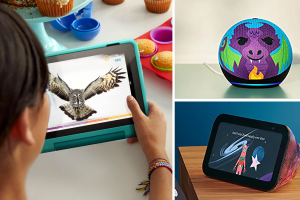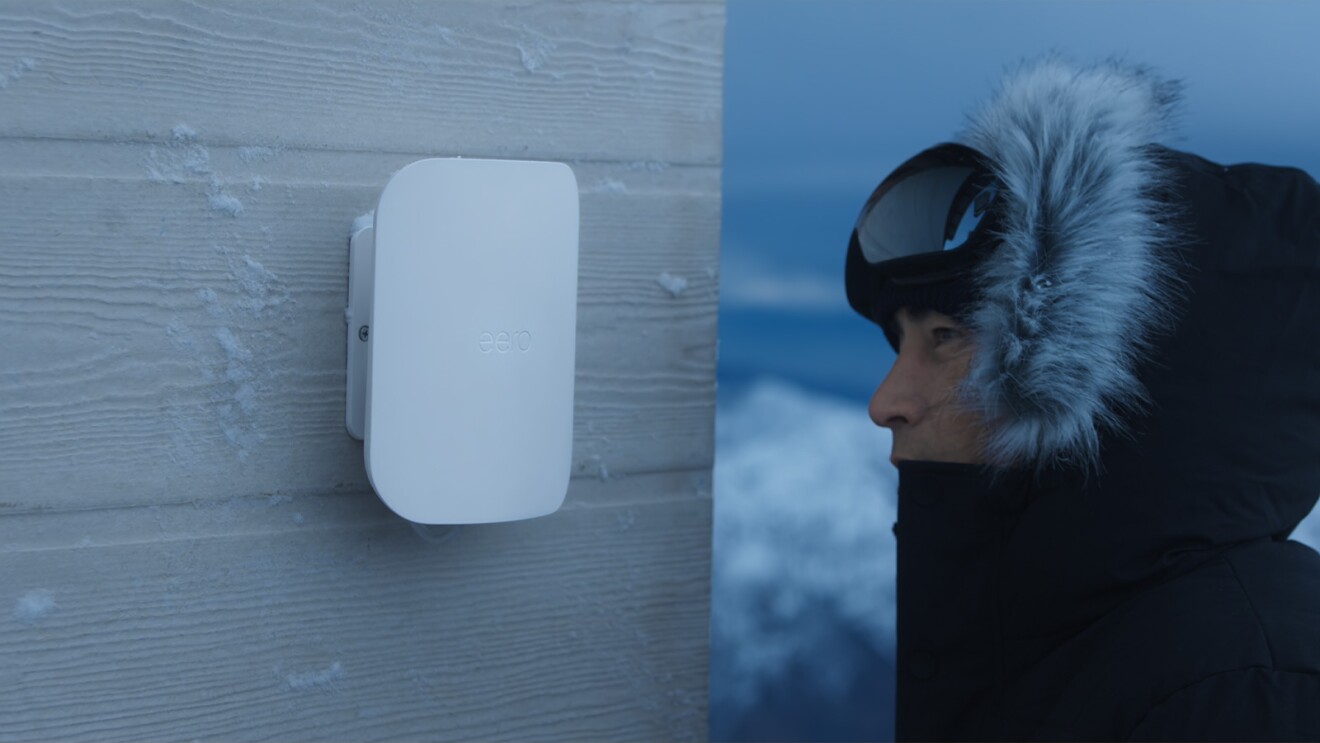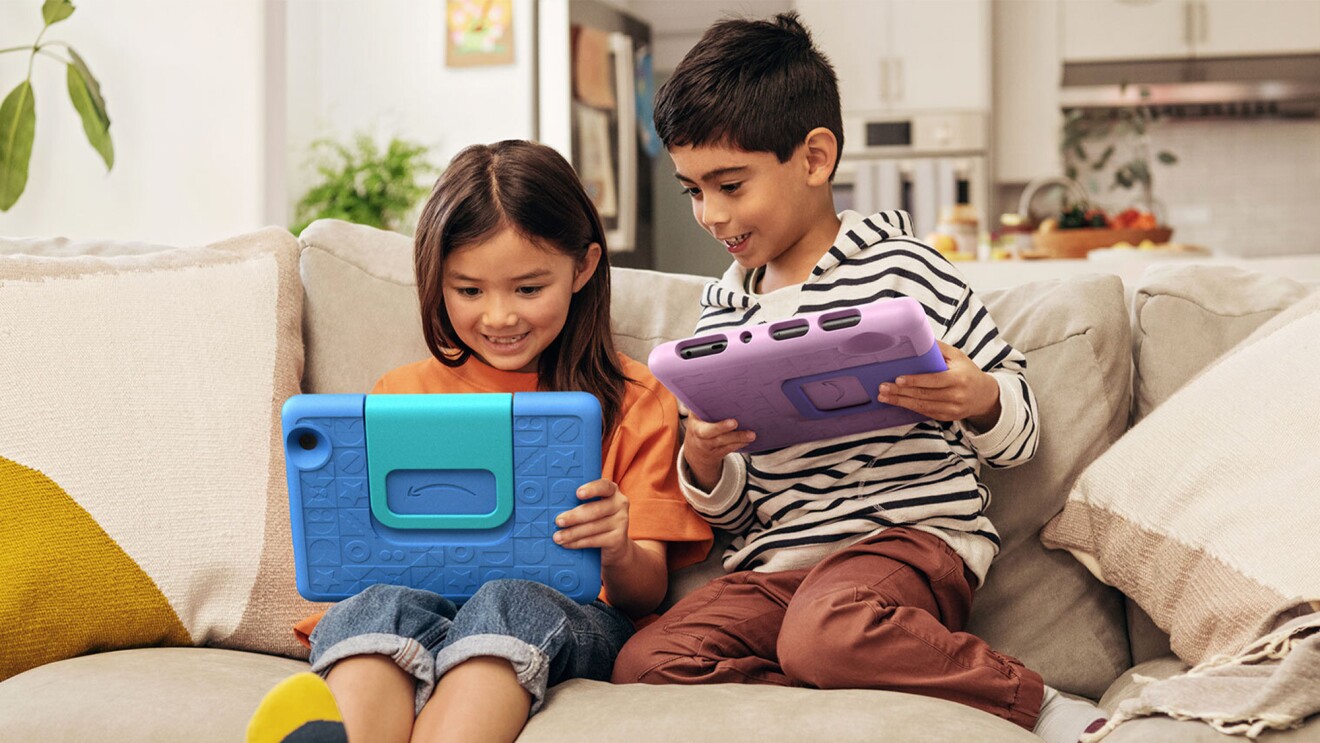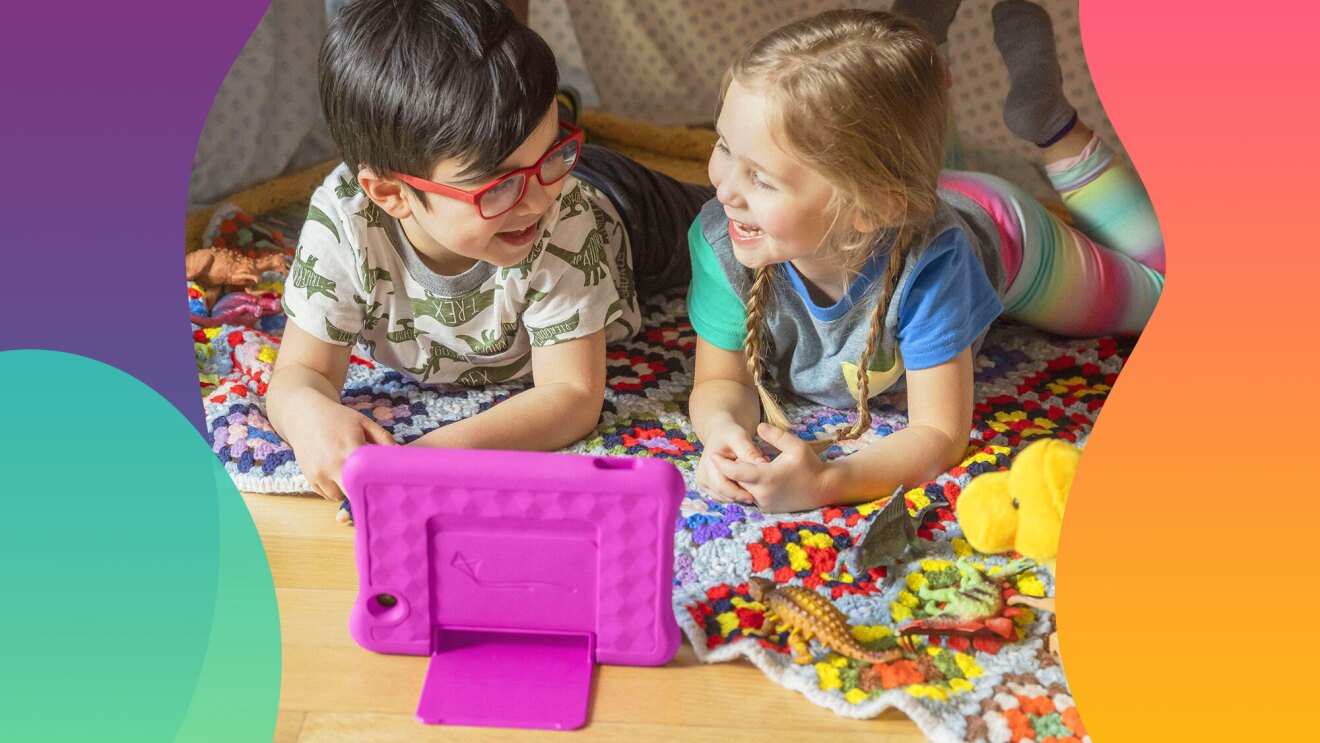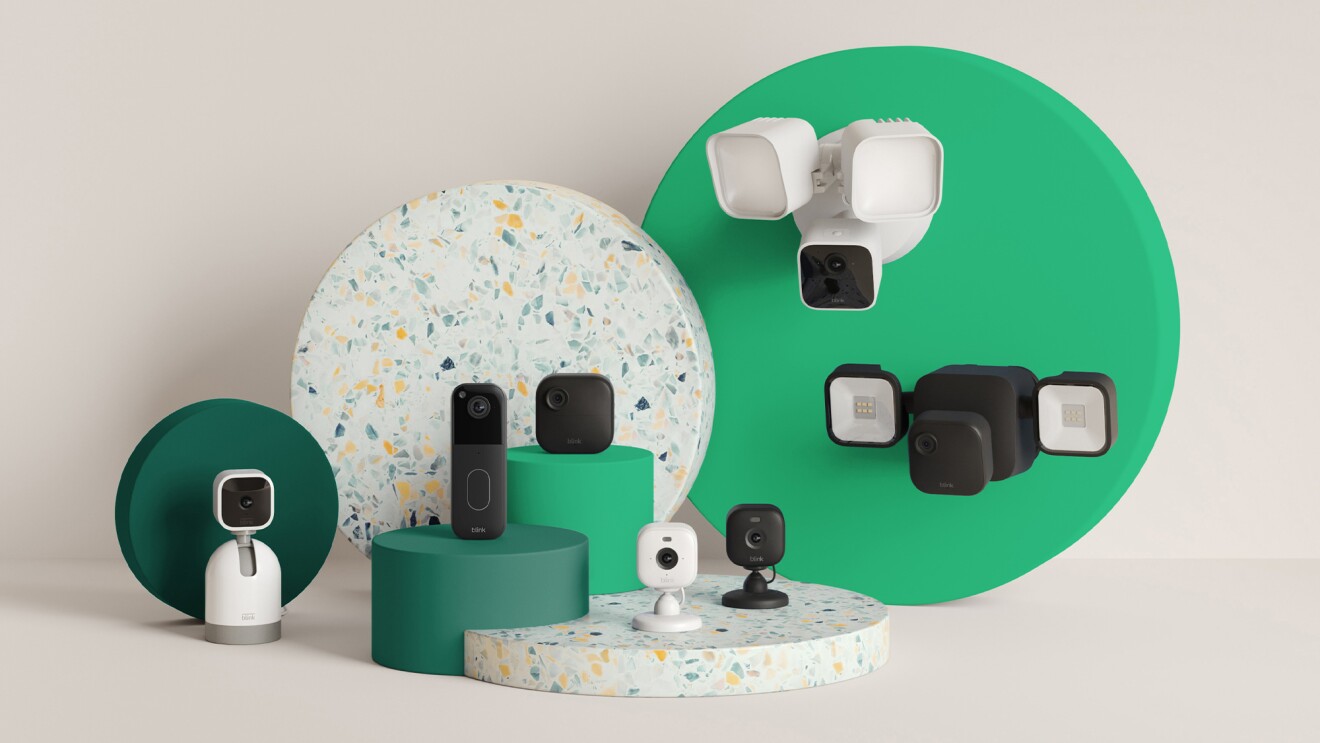Amazon Parent Dashboard is the free hub where parents and guardians manage and customize their kids’ experiences across Amazon devices and the Amazon Kids+ subscription. Parents use the Parent Dashboard to configure age-appropriate settings, set screen time limits, monitor some of their child’s activities, and find age-appropriate books, apps, games, videos, Alexa skills, and other content. The Parent Dashboard works with Amazon Echo speakers and displays, Kindles, Fire TV, Fire tablets, and other mobile devices.
The Parent Dashboard is a parental empowerment tool and, in a sense, a child empowerment tool, because it helps you and your child together choose appropriate media. No technology, including Amazon Parent Dashboard, is a substitute for parental involvement in your children’s media choices. Even with the Dashboard, it’s important for parents to talk with their children about the media they consume and be around to offer suggestions and support.
The ultimate goal of the Parent Dashboard and any well-crafted parental content management tool is to help your child build up their critical thinking skills so they can make appropriate decisions as they mature. Eventually, your children will reach a point where you no longer need to use tools like Amazon Parent Dashboard because they will be equipped with the critical thinking skills they need to make their own decisions regarding appropriate content and screen time.
It’s like teaching your child to get around in the physical world. You start by holding a young child’s hand when they cross the street. Later you let go, later still they cross the street by themselves, and later still they plot their own route and eventually get around by bike, car, or public transportation without parental supervision. It’s all part of teaching your child to be self-sufficient, one step at a time.
Does it cost anything, and where do I get it?
The Parent Dashboard is free, as is the Amazon Kids+ app for iOS and Android. You’ll need to sign in with a free Amazon account, but you won’t need Prime to use the free parent tools. You also have the option to subscribe to Amazon Kids+, which gives children unlimited access to more than 20,000 kid-friendly books, movies, TV shows, educational apps, and games.
We focus on the mobile app in this guide, but you can also access Amazon Parent Dashboard on a web browser at parents.amazon.com.
How do I get started?
Sign in to the Amazon Kids+ app with your Amazon credentials and set up individual child profiles for your kids. The Parent Dashboard assigns each of your children to an age group based on the birthdate you enter (you can override the recommended age range for content in Settings > Adjust Age Filter and Theme). To review default settings based on your child’s age, click on the gear next to the child’s name.
How do I access the Parent Dashboard?
How do I set time limits?
Go to Settings > Set Daily Time Limits to set limits on Fire Tablets, Echo, and Fire TV devices. Note that time limits do not apply to Kindle devices, presumably because many parents don’t limit their kids’ reading activities. Options include:
- Daily Time Limits: Customize when and how long your kids use any device connected to their Amazon profile. Customize when and how long your kids use their device (or devices if more than one Amazon device is connected to their profile).
- Bedtime: Set a time when devices turn off at night and how long they stay off.
- Time by Activity Type: Select how long different activities are allowed, including apps, reading, watching videos, etc., or simply set a “total screen time” for the day.
- Educational Goals: Set goals for daily reading and time spent using educational videos and apps. An optional “Learn First” setting blocks entertainment content until educational goals are met.
What about web browsing?
Amazon offers a web browser on Fire tablets that is designed for kids. Using the browser, kids can access Amazon-curated websites and web videos appropriate for their age and enjoy a less restrictive but still filtered browsing experience.
As you configure these settings, think about what your child needs in terms of access and restrictions. One size doesn’t fit all. Some children will have a better and safer experience with access only to “hand-selected websites and videos,” while it may be more appropriate for others to have access to “filtered websites and videos.” It depends not just on your child’s age, but on their maturity and self-discipline, along with other factors.
Access web browser settings at Settings > Modify Web Browser. You have three options, listed from most to least restrictive:
- Block access to web browsing. Tap Enable Web Access to turn the setting OFF. (The slider will appear gray when access is OFF.)
- “Hand-Selected Websites & Videos.” An Amazon Kids+ subscription gives children access only to the thousands of websites and web videos pre-screened by the Amazon Kids team.
- “Filtered Websites & Videos.” Provides a more open but filtered browsing experience more appropriate for older children or young teens. You can block specific websites.
If you pick one of the last two options, you can see what content your child is accessing online through the browsing history on the Parent Dashboard homepage by selecting Web in the activity reporting section.
Knowing what your child is accessing can serve as a conversation starter. Talk with them about what they enjoy and why they enjoy it. Ask them if there is any content they didn’t enjoy and—at least sometimes—co-view it with them. Kids love to share their excitement about the media they love and—who knows—you may grow to love it too.
How do I add content?
Go to Settings > Add Content. All the content you have purchased from Amazon will be visible to you in tabs labeled Books, Videos, Apps, Audible, and Alexa Skills. Your children will only see a selection of age-appropriate content based on the age limits you set, though you can disable access to any content or, at your discretion, give the child access to any additional content in the parent’s Amazon library.
Pay extra attention to Apps. This tab features apps from outside the Amazon Kids eco-system like Netflix and Hulu. Amazon Parent Dashboard’s age filters don’t work on outside apps, but many of these apps have their own filters that you will have to apply separately.
If you’re a Prime member, go to Settings > Manage Prime Video Access to view what content your child can access.
Choosing content together
Amazon Kids+ employs experts who curate appropriate content based on your child’s age or the age filter you set for your child. But you—the parent—are the real expert when it comes to your children, which is why Amazon Dashboard gives you the ability to override any recommendations and add or delete content and to adjust the age filter based on your child’s maturity, tastes, and sensitivities.
You might, for example, have a book or movie in your library that you want your child to access because you know it’s suitable for your child. Or you might want to limit access to specific content because you don’t feel it’s appropriate and that too is up to you. In some cases, your child might ask you to add content, apps, or games, which provides a good opportunity to talk with your child about why they want access to that material. It’s a way to explore together the universe of videos, books, songs, apps, games, and other content and talk about well-being and life balance.
How can I control calls and messages?
Fire tablets and some Alexa devices allow for announcements (communication between Alexa devices in your household), video and voice calling and messaging, but the parent must turn on these features. Go to Settings > Manage Communications and tap Grant parental consent or Hide these features on my child’s tablet.
In-app purchasing and Amazon store access
This option only applies to Fire tablets and is OFF by default for child accounts. Every in-app purchase, except free items, requires your Amazon password. Again, this only applies to Amazon apps. Outside apps may have their own policies regarding in-app purchases.
Store access lets parents enable their kids to access a selection of free and paid apps and games from developers outside of Amazon. If your child wants to access an app, you will receive a notification by email and must approve the request before the child can download it. In addition, you can choose to allow access to an expanded selection of apps and games that includes content not just intended for kids (like Netflix, Zoom, and Minecraft).
As with the selection of apps and games intended for kids, the expanded selection requires parents to approve requests. And again, remember that any parental controls designed for Amazon Kids+ do not apply to other apps, so make sure you only approve age-appropriate apps and familiarize yourself with any parental controls available within those apps.
Closing thoughts for parents
Amazon’s Parent Dashboard is a tool to help parents, but it’s not a substitute for parenting, nor can it, by itself, equip children with the skills, judgment, and critical thinking skills they need when it comes to the safe and responsible use of media. That’s a parent’s job.
We encourage you to explore how the Parent Dashboard can help you set and enforce the limits that you think are appropriate for your child, knowing that age-based recommendations are just guidelines—only you can determine what is appropriate for your child. And, even if you have tools in place to help manage and monitor your children’s media use, you still need to be nearby—at least some of the time—to check in with your child, guide your child, and get to know, first hand, what media your child loves and what may be missing from their media diet.
Even with Amazon Parent Dashboard time limits, it’s parents who must help their children balance their media time with other activities such as exercise, school work, hanging out with friends and family, helping around the house, and, of course, sleeping.
Finally, know that you’re not just raising a child; you’re raising an adult. The goal of any form of parental management should be to help your child develop their own sense of responsibility and control over what media they consume and how they consume it. Before you know it, your little one will be a teenager and that teenager will be an adult, and it will be up to them—not the technology or even you—to make good decisions about their use of media and all other aspects of life.
Visit the new Family Digital Well-Being Hub to browse all of our portfolio of resources. Remember to bookmark the hub and check back often for the latest news and updates.


